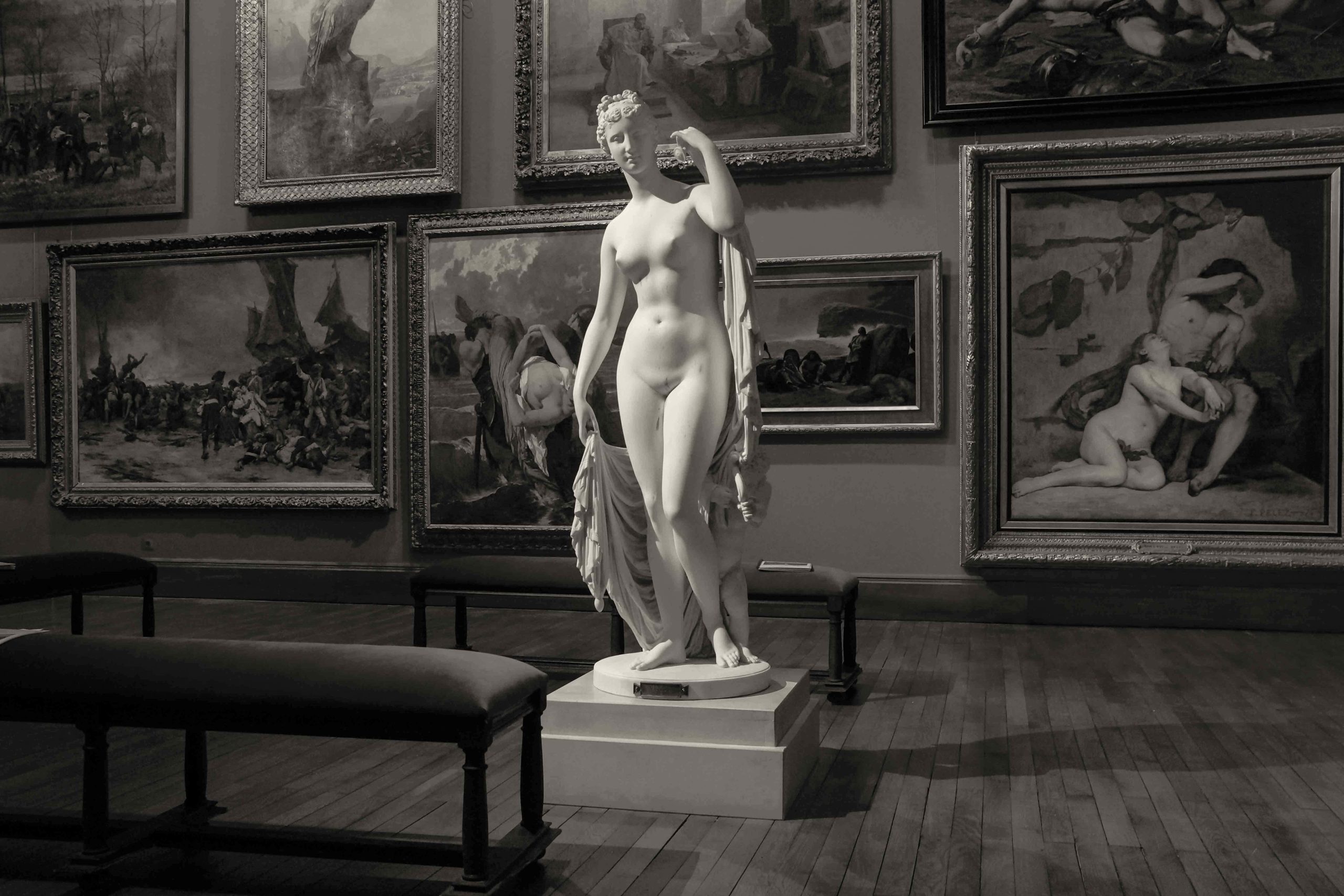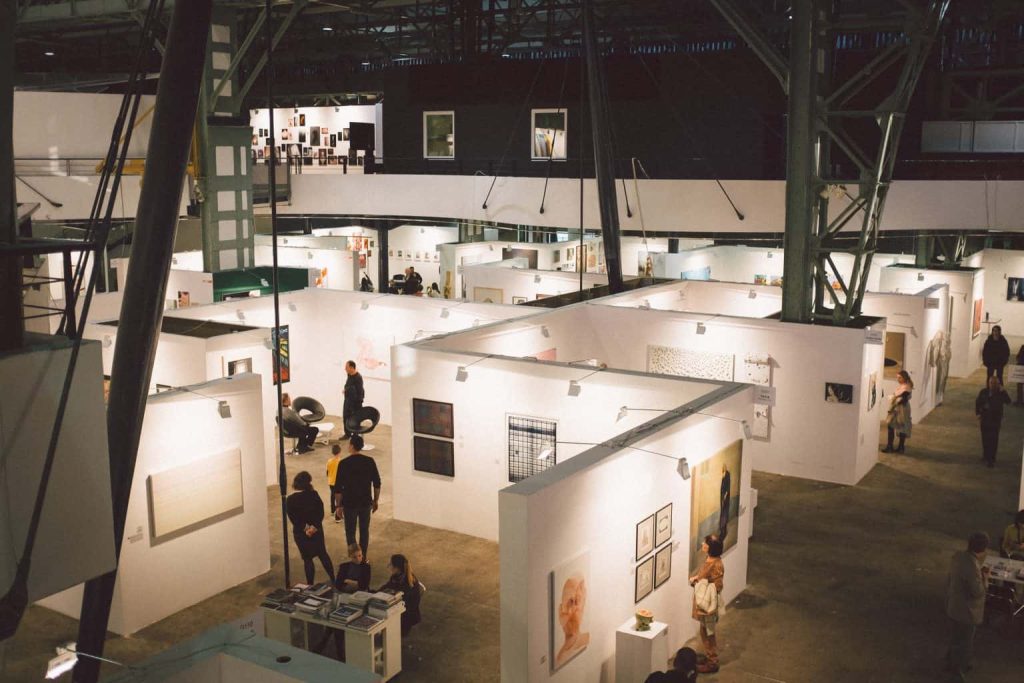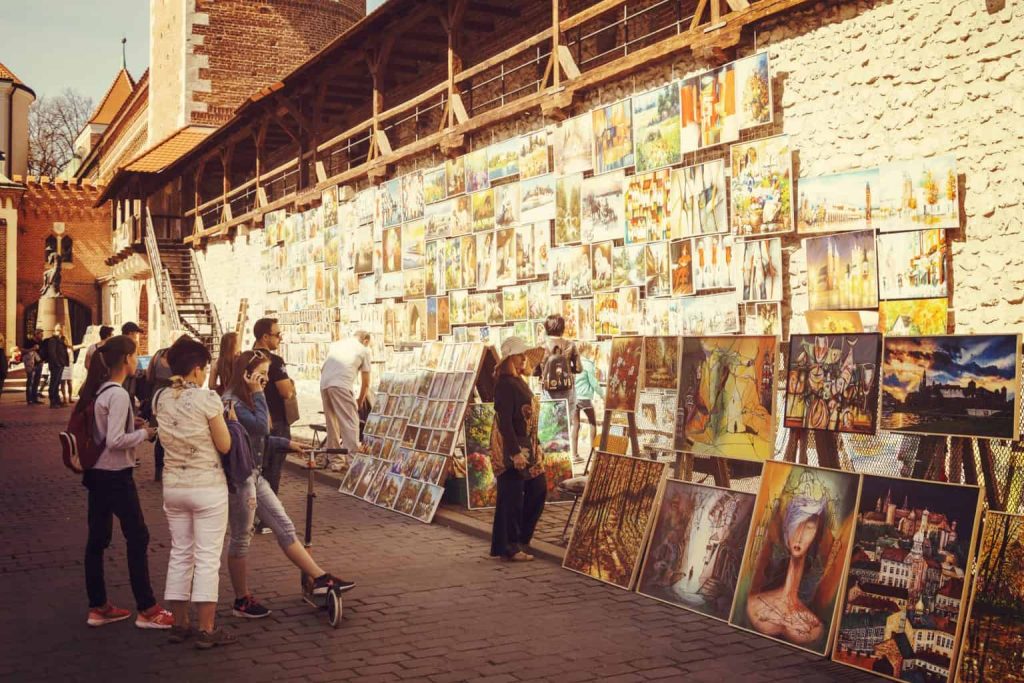
12 Mar Contemporary Art Galleries: A Gateway for Artists
Contemporary art mirrors our rapidly evolving world, reflecting its complexities and dynamism. Artists navigate this landscape, weaving threads of innovation and expression. Art galleries serve as pivotal gateways, connecting artists with audiences and propelling careers forward. These spaces are not mere repositories; they foster cultural exchange and dialogue, igniting inspiration and validating artistic endeavors. Within these sanctuaries of creativity, artists find validation and connection, their voices resonating beyond studio walls. Galleries become platforms where fresh perspectives intersect with eager audiences, pushing the boundaries of artistic expression. As beacons of possibility, they fuel careers and foster legacies, inviting exploration of the myriad hues of human experience. In this tapestry of contemporary art, galleries stand as portals to unseen worlds, guiding lights in an ever-evolving landscape of creativity.
Importance of Art Galleries for Artists

Photo by Bence Szemerey
Visibility and Exposure
Art galleries provide artists with invaluable opportunities to exhibit their work to a carefully curated audience, consisting of collectors, curators, and passionate art enthusiasts. These spaces transcend mere display, acting as conduits that elevate an artist’s credibility and visibility within the broader art community. By showcasing their creations in galleries, artists gain recognition and establish themselves as serious practitioners in their respective fields. Furthermore, participating in group exhibitions within gallery settings not only exposes artists to wider audiences but also fosters connections and relationships within the artistic community. These exhibitions become pivotal moments for artists to engage with peers, exchange ideas, and collaborate on projects, ultimately creating a supportive ecosystem that nurtures artistic growth and innovation. In essence, art galleries serve as more than just exhibition spaces; they serve as dynamic hubs that catalyze dialogue, exploration, and the sharing of artistic visions.
Professional Development
Art galleries is invaluable resources for artists in pursuit of professional growth and development. Within these spaces, artists gain access to a wealth of knowledge, advice, and mentoring from seasoned practitioners within the art world. This guidance extends beyond the realms of creative expression, encompassing essential aspects of navigating the intricate landscape of marketing, sales, and the business dimensions of their careers. By collaborating with galleries, artists not only showcase their work but also open doors to participation in larger-scale projects and more expansive exhibitions. These opportunities not only expose artists to broader audiences but also propel them towards greater recognition and acclaim within the art community. As artists engage with galleries, they acquire vital skills, forge meaningful connections, and position themselves for sustained growth and success in their artistic endeavors. Through this symbiotic relationship, artists and galleries mutually contribute to the enrichment and advancement of the broader artistic landscape.
Financial Opportunities
Galleries serve as pivotal intermediaries, bridging the gap between artists and prospective buyers or collectors. By showcasing artwork within gallery spaces, artists gain access to a broader market and a network of potential patrons. Successful sales facilitated through galleries not only offer artists financial stability but also enable them to reinvest in their artistic pursuits, fueling creativity and innovation. Furthermore, gallery representation often leads to an appreciation in the value and market price of an artist’s work over time. As artists build relationships with galleries and establish a presence in the art market, the demand for their pieces tends to grow, creating a mutually beneficial dynamic between the artist and the gallery. This symbiotic relationship not only sustains the artist’s career but also provides galleries with sought-after pieces to attract collectors and art enthusiasts. Ultimately, the collaboration between artists and galleries fosters an ecosystem of support and opportunity that propels the continued growth and evolution of the artistic landscape.
Tips for Getting Exhibited

Photo by PhotoMIX Company
Developing a Strong Portfolio
When it comes to curating a portfolio, quality reigns supreme over quantity. It’s imperative for artists to meticulously select pieces that not only showcase their technical prowess but also distinctly reflect their unique style and artistic voice. Moreover, maintaining a portfolio that evolves with innovative work is essential for staying relevant in the ever-changing art world. Regular updates ensure that the collection remains dynamic and reflective of the artist’s growth and exploration. Professional presentation and documentation are equally crucial aspects of portfolio development. How artists present their work can significantly impact the impression they leave on gallery curators and potential buyers. From high-quality photographs to well-crafted descriptions, every detail contributes to the overall presentation. Investing time and effort into the presentation demonstrates a commitment to excellence and professionalism, enhancing the portfolio’s appeal to discerning audiences.
Researching Galleries
Selecting the right galleries to showcase one’s work is a strategic decision that can profoundly influence an artist’s career trajectory. It’s not just about finding any gallery willing to exhibit artwork but rather identifying establishments that resonate with the artist’s aesthetic sensibilities and career objectives. Understanding the curatorial direction and target audience of a gallery is paramount to tailoring submissions effectively. Thorough research into a gallery’s history and reputation can provide valuable insights into its commitment to supporting emerging artists. Examining past exhibitions, artist rosters, and client demographics helps artists gauge whether a particular gallery aligns with their long-term goals. By choosing galleries that have a track record of nurturing talent and fostering meaningful relationships within the art community, artists can position themselves for greater visibility and success.
Making Contact
A well-crafted artist statement serves as a concise introduction, offering insights into the artist’s inspirations, motivations, and artistic philosophy. Adhering strictly to submission guidelines and deadlines demonstrates professionalism and respect for the gallery’s protocols. Networking plays a pivotal role in establishing a presence within the art community. Attending art events, openings, and exhibitions provides valuable opportunities to connect with fellow artists, curators, and gallerists. Building genuine relationships based on mutual respect and shared interests can open doors to collaboration, mentorship, and future exhibition opportunities. In an industry where personal connections often pave the way for success, cultivating a strong network can be just as critical as honing artistic skills.

Photo by Snow White
Conclusion
Contemporary art galleries serve as indispensable gateways for artists, facilitating their journey towards recognition, professional development, and financial stability. Through providing visibility and exposure, fostering professional development, and creating financial opportunities, galleries enable artists to thrive within the dynamic landscape of contemporary art. As artists navigate the realm of art galleries, it becomes evident that developing a strong portfolio, researching galleries strategically, and making professional contacts are essential steps towards securing exhibitions and representation. By adhering to these tips and leveraging the resources offered by galleries, artists can enhance their chances of success within the competitive art world. In essence, the symbiotic relationship between artists and contemporary art galleries underscores the importance of these spaces as catalysts for artistic growth and advancement. As both creators and patrons continue to evolve, art galleries remain steadfast in their role as vital conduits for artistic expression, innovation, and connection with diverse audiences worldwide.
Key Takeaways
Importance of Art Galleries | Tips for Getting Exhibited |
Visibility & exposure to curated audience | Develop a strong, selective portfolio |
Professional guidance & mentorship | Research galleries aligned with style |
Financial stability & market value growth | Submit professionally & network |
FAQs
How do galleries enhance the credibility of artists?
Galleries are essential for building artists’ credibility since they give them a place to display their works. Galleries convey to art lovers and collectors that an artist has received recognition and backing from professionals in the art world by organizing exhibits and choosing artists to represent them. The artist’s legitimacy and reputation are strengthened by this validation, and this might lead to more opportunities and attention from the art world.
Are there specific strategies for networking with gallery professionals?
Networking with gallery professionals requires a thoughtful and proactive approach. Attending art events, exhibitions, and gallery openings provides opportunities to engage with industry insiders and establish meaningful connections. Additionally, leveraging social media platforms allows artists to interact with gallery professionals in a virtual setting, showcasing their work and initiating conversations. Effective networking involves presenting a concise artist statement and portfolio that succinctly communicate the artist’s vision and aesthetic, facilitating meaningful dialogue and potential collaboration with gallery professionals.
How does gallery representation impact an artist's financial stability?
Gallery representation can significantly impact an artist’s financial stability by facilitating connections with potential buyers and collectors. Through exhibitions and marketing efforts, galleries showcase the artist’s work to a broader audience, increasing the likelihood of sales and generating revenue for the artist. Moreover, consistent representation by reputable galleries can elevate the perceived value and market price of an artist’s work overtime. This increased demand and recognition contribute to the artist’s financial stability, providing a steady income stream and opportunities for further growth and recognition within the art market.
Explore the wide range of efforts that break down barriers, promote cross-cultural dialogue, and bring together disparate creative perspectives in ventures that have the potential to alter the world as you go on an extensive trip exploring successful global art projects and partnerships through this “Case Studies: Successful International Art Collaborations” guide.

